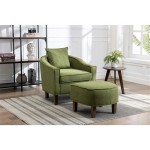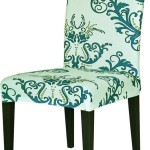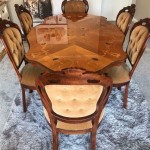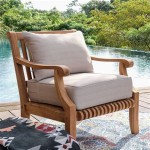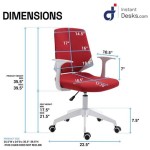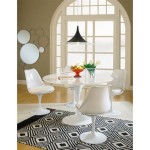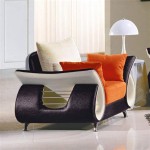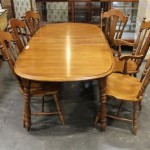Mid-Century Modern Counter Height Chairs: A Guide to Style and Function
Mid-Century Modern design, an aesthetic movement that flourished roughly from the mid-1930s to the mid-1960s, continues to resonate in contemporary interiors. Characterized by clean lines, organic forms, and a focus on functionality, this style offers a timeless appeal. Within this broader design philosophy, Mid-Century Modern counter height chairs have found a niche, providing both visual interest and practical seating solutions for kitchens, dining areas, and home bars. This article explores the key features, materials, and considerations when selecting Mid-Century Modern counter height chairs.
Understanding the Essence of Mid-Century Modern Design
To effectively appreciate and choose appropriate counter height chairs within this style, a basic understanding of Mid-Century Modern design principles is essential. The movement was largely influenced by Bauhaus, a German art school that emphasized the unity of art, craft, and technology. This translated into furniture with simple, unadorned shapes, prioritizing function over elaborate ornamentation. Another key influence was the post-war era's embrace of new materials and manufacturing techniques. Designers sought to create affordable and accessible furniture for the masses, leading to innovative uses of plywood, plastic, and metal.
The core tenets of Mid-Century Modern design include: clean lines, often expressed through tapered legs and minimalist frames; organic shapes, inspired by nature and incorporated into chair backs and seats; a focus on functionality, ensuring furniture is comfortable and serves its intended purpose efficiently; the use of natural materials, such as wood, leather, and natural fibers; and a limited color palette, often featuring muted earth tones alongside pops of brighter colors like turquoise, orange, and yellow. Recognizing these elements is crucial when evaluating the authenticity and aesthetic suitability of counter height chair options.
Counter height chairs, specifically, differ from standard dining chairs by their seat height. Typically, counter height chairs have a seat height of 24-27 inches, designed to pair with counters that are 35-39 inches high. This makes them ideal for kitchen islands, breakfast bars, and elevated dining surfaces commonly found in modern homes. Achieving the right height is crucial for comfortable dining and a cohesive overall design.
Key Materials and Construction of Mid-Century Modern Counter Height Chairs
The materials and construction methods employed in Mid-Century Modern counter height chairs contribute significantly to their distinctive aesthetic and durability. These chairs frequently feature a combination of natural and synthetic materials, reflecting the era's experimentation and focus on affordability.
Wood is a dominant component, particularly hardwoods like walnut, teak, and birch. Walnut is prized for its rich grain and warm color, often used for frames, legs, and backrests. Teak, known for its durability and resistance to moisture, is commonly featured in chairs intended for use in kitchens or covered outdoor spaces. Birch provides a lighter and more affordable alternative, often stained or painted to achieve the desired finish. The wood is typically shaped into smooth, rounded forms, showcasing the natural beauty of the material.
Metal, particularly steel and chrome, is another important element. Steel is often used for chair frames, providing strength and stability. Chrome plating adds a sleek, modern touch and enhances the metal's resistance to corrosion. The metal is typically used in slender, geometric forms, complementing the clean lines of the wood components.
Upholstery fabrics play a crucial role in the overall aesthetic and comfort of the chair. Common choices include: natural fabrics like wool, linen, and cotton blends, valued for their texture and breathability; synthetic fabrics like vinyl and nylon, chosen for their durability and resistance to stains; and leather, which adds a luxurious and sophisticated touch. The upholstery often features simple patterns or solid colors, reflecting the minimalist aesthetic of the era. Textures, such as woven patterns or subtle tweeds, are frequently used to add visual interest without overwhelming the design.
Construction techniques often involve a combination of traditional woodworking methods and modern manufacturing processes. Mortise and tenon joints, dowel joints, and screws are commonly used to ensure structural integrity. Plywood is frequently used for chair seats and backrests, allowing for curved shapes and efficient material usage. Metal frames are typically welded or bolted together for strength. The overall construction emphasizes durability and longevity, reflecting the Mid-Century Modern ethos of creating furniture that is both beautiful and functional.
Additionally, molded plastic began to appear in Mid-Century Modern designs, especially toward the later part of the era. Though perhaps less common in "high-end" renditions, molded plastic offered affordability and the opportunity for unique curved shapes that are now associated with the style.
Factors to Consider When Selecting Mid-Century Modern Counter Height Chairs
Choosing the right Mid-Century Modern counter height chairs requires careful consideration of several factors, including style, comfort, durability, and budget. These elements must be balanced to ensure that the chairs not only complement the overall design of the space but also provide a comfortable and practical seating solution.
Style cohesion is paramount. The chairs should align with the existing Mid-Century Modern aesthetic of the room, considering the color palette, materials, and overall design principles. If the room features predominantly warm tones and natural materials, chairs with walnut frames and leather upholstery would be a suitable choice. If the room has a more minimalist design with pops of color, chairs with painted birch frames and brightly colored fabric upholstery could be a better fit. It is important to consider the existing furniture and architectural details to ensure a harmonious and cohesive look.
Comfort is a crucial consideration, especially if the chairs will be used frequently. Look for chairs with ergonomically designed seats and backrests that provide adequate support. Consider chairs with padded seats and backrests for enhanced comfort. The seat height should be appropriate for the counter height, allowing for comfortable legroom and a relaxed posture. It is advisable to try out the chairs in person, if possible, to assess their comfort level before making a purchase. Elements such as backrests that are too low or seats that are too shallow can diminish comfort significantly.
Durability is essential for chairs that will be subjected to daily use. Look for chairs constructed from high-quality materials and with robust construction techniques. Hardwood frames, steel frames, and durable upholstery fabrics are indicative of a long-lasting product. Check the weight capacity of the chairs to ensure they can accommodate the intended users. Consider the ease of maintenance and cleaning. Chairs with stain-resistant upholstery and easy-to-clean surfaces are ideal for households with children or pets.
Budget is always a significant factor. Mid-Century Modern counter height chairs range in price from affordable reproductions to high-end designer pieces. It is important to set a budget beforehand and research various options within that price range. Consider investing in a few high-quality chairs that will last for many years, rather than opting for cheaper options that may need to be replaced frequently. Exploring vintage options can sometimes provide access to authentic Mid-Century Modern pieces at a lower cost, though these may require some restoration or reupholstering.
Finally, consider the scale and proportion of the chairs in relation to the counter and the surrounding space. The chairs should not overwhelm the counter or the room. Choose chairs with a streamlined design that fits comfortably under the counter when not in use. Consider the overall flow of the room and ensure that the chairs do not obstruct pathways or create a cluttered appearance. Attention to scale and proportion is essential for creating a balanced and visually appealing space.

Swivel Mid Century Modern Counter Height Stool Rotating Bar With Curved Back And Wood Frame Lue Bona

Mid Century Modern Orange Velvet Upholstery Bar Stools With Footrest Homary

Glitzhome 29 50 In Seat Height Modern Wood Fabric Gray 360 Swivel Bar Stool With Low Back Set Of 2 2000900008

Scandinavian Style Counter Stools Bloom Mid Century Modern Walnut Wood Bar Stool Set Styl

Apex Swiveling Wood Counter Stool Carved Seat Mid Century Modern Tractor Kitchen Barstool Natural Finish Etsy Denmark

Shop Folia Mid Century Modern Counter Stool In Walnut Wood And Teal Fabric Set Of 2 Barstools Casaone

Mid Century Modern Brown And Gray Counter Height Stool Set Of 2 Tintori Rc Willey

Nspire 26 In White And Walnut Mid Century Modern Counter Stool With Swivel Seat 203 582puwt Rona

Mid Century Modern Counter Stool Swivel Bar Wood Tractor Seat Height Carved Samples Etsy

Walnut Bentwood Bar Stools Mid Century Modern New Releases
